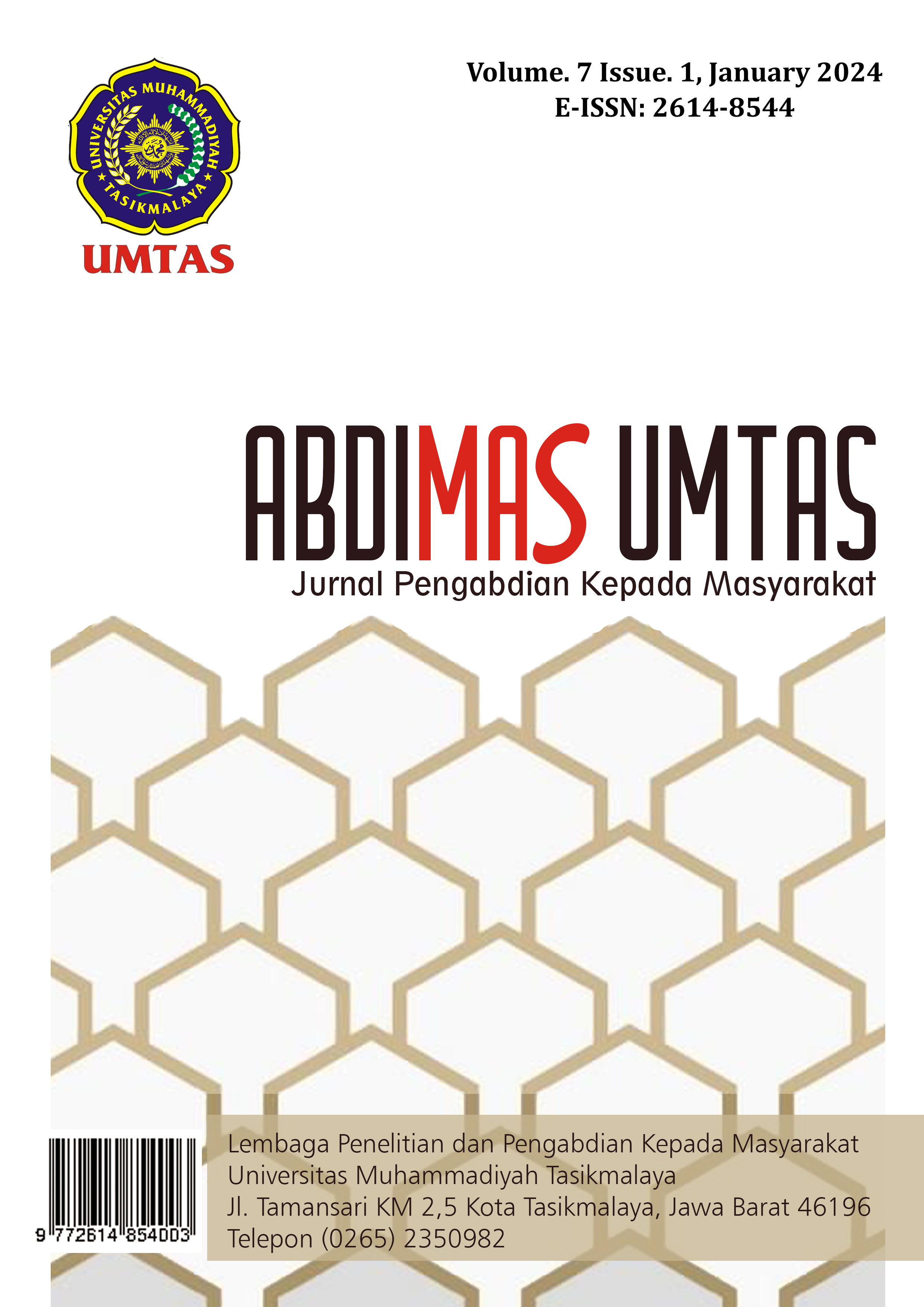Parental Health Education in Identifying Emotional Problems in Children with Autism Spectrum Disorder in Cimahi City SLB
DOI:
https://doi.org/10.35568/abdimas.v7i1.4456Keywords:
autism spectrum disorder, emotional, health education, parentsAbstract
Autism Spectrum Disorder (ASD) is a pervasive neurodevelopmental disorder characterized by impaired verbal and nonverbal communication, reciprocal social interactions, and restricted and repetitive behavior. Children with ASD tend to have difficulty understanding and expressing emotions, paying attention to facial expressions, other social skills, and emotional skills. As a result, children and parents both do not understand each other. This community service aims to provide understanding to parents in identifying emotional disorders that occur in children, looking for efforts to control children's emotions. This community service method is by conducting outreach by providing health education to parents of children with ASD, which is carried out with lectures and question-and-answer discussions. This socialization was designed using observational analytics with a cross-sectional study design approach. The result of this community service was the presence of parents of Cimahi City SLB students to take part in socialization in efforts to handle emotional problems in children with ASD. It is hoped that parents will be able to identify disorders that occur in children and be able to understand efforts to control children's emotions.
Downloads
References
Antia, K., Račaitė, J., Šurkienė, G. et al. (2023). The gender gap in adolescents’ emotional and behavioural problems in Georgia: a cross-sectional study using Achenbach’s Youth Self Report. Child Adolesc Psychiatry Ment Health, 17, 44.
Brown, M. S. (2019). Parent-professional partnerships: A valuable resource in the education of students with autism spectrum disorder. The Educational Forum, 83(2), 135–147.
Head, A. M., McGillivray, J. A., & Stokes, M. A. (2014). Gender differences in emotionality and sociability in children with autism spectrum disorders. Molecular autism. 5(1), 1-9.
Hill, E., Berthoz, S. and Frith, U. (2004). Brief report: cognitive processing of own emotions in individuals with autistic spectrum disorder and in their relatives. Journal of Autism and Developmental Disorders, 34(2), 229–235.
Jones, L., Darlington, Y., & De Pascalis, L. (2020). Building School and Family Partnerships: The Role of Parent-Teacher Communication. Australian Journal of Guidance and Counselling, 30(2), 186–200.
Kementerian Kesehatan RI. (2022). Autisme A-Z Webinar Peringatan Hari Peduli Autisme Sedunia 2022.
Lever, A. G., & Geurts, H. M. (2016). Psychiatric co-occurring symptoms and disorders in young, middle-aged, and older adults with autism spectrum disorder. Journal of Autism and Developmental Disorders, 46, 1916-1930.
P. Murphy and S. Oliver. (2015). Autism: Navigating Through the Maze. pp. 94–94. https://doi.org/doi: 10.1145/2745234.2746819
Smith, J. D., Gratz, K. L., & Harnden-Fischer, J. (2016). Parenting and children’s mental health: An overview of research and needed directions. In D. Cicchetti. Developmental Psychopathology, 3rd ed Vol, 1–49.
Sukmawatia, Lilis Mamuroh, and F. N. (2022). Health Education to Overcome Side Effects of Chemotherapy in Cancer Patients. Abdimas Umtas: Jurnal Pengabdian Kepada Masyarakat, Volume: 6.
World Health Organization. (2022). Autism.
Sukmawatia, Lilis Mamuroh, and F. N. (2022). Health Education to Overcome Side Effects of Chemotherapy in Cancer Patients. Abdimas Umtas: Jurnal Pengabdian Kepada Masyarakat, Volume: 6.














